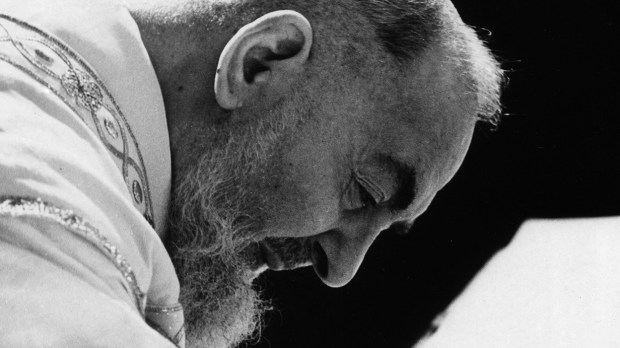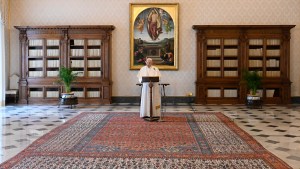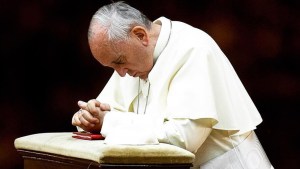The Covid-19 coronavirus pandemic is far from the first pandemic to affect our world. Looking at history can help us to understand how to grapple with the present, and particularly if we look at the examples set in history by the saints.
Just over 100 years ago, the H1N1 influenza virus commonly referred to as the Spanish influenza infected roughly one third of the world’s population. The death toll is estimated at between 20 million and 50 million, although some experts believe that as many as 100 million died.
People of all ages were infected and succumbed. Especially vulnerable were young, pregnant women.
St. Padre Pio – who had just received the stigmata – was also infected. So were people close to him in San Giovanni Rotondo and Pietrelcina: fellow friars, spiritual sons and daughters, and even his own family members in Pietrelcina.
In his new book, The Pandemic of Padre Pio: Disciple of our Lady of Sorrows, Stefano Campanella researched this period.
As director of Tele Radio Padre Pio in San Giovanni Rotondo, Campanella utilized his access to numerous correspondence between Padre Pio and others to reconstruct this little-known period of Padre Pio’s early life.
What becomes apparent is that Padre Pio did not experience the Spanish Flu as a random scourge, a meaningless burden, or cause of despair. Instead, he faced it with holy resignation and abandonment to the will of God.
Another suffering
Padre Pio confronted the Spanish Flu in the same way he faced all his sufferings, including the stigmata and his myriad health ailments. He united it to the sufferings and Passion of Christ. In this way, he offered up his sufferings and thus interceded for the salvation of sinners and the healing of the sick. This was the ministry of Padre Pio.
In San Giovanni Rotondo, three sisters – all spiritual daughters of Padre Pio – were all sick with the virus. One of them, Vittorina Ventrella, was worse than the other two. Her sisters sent a message to Padre Pio asking for his assistance.
He reassured them with a letter: “If you have faith, none of you will perish.” Indeed, they all recovered. Vittorina later said she believed he offered his sufferings for her healing.
Another family that frequented the convent was also seriously infected – Nicola and Maria Campanile and their eight children. Only Nicola and one daughter, Maria Annina, remained uninfected.
“Do not fear,” he said to Maria, “keep yourselves under the protection of the Virgin Mary. Do not commit sins, the disease will have no reason for [harming] you.”
In fact, none of his spiritual daughters died from [the influenza].
Nina later recounted that during that period, Padre Pio suffered a lot. She deduced that he “was taking on sufferings to save souls and bodies from the Spanish flu.”
Another who benefited from Padre Pio’s prayers and immolation was Assunta Di Tomaso who fell seriously ill towards the end of 1918. She remained in the guesthouse of the friary where she was certainly the beneficiary of a divine grace.
Padre Pio assured her:
You were counted for dead. There was no doubt that what you endured should have led to the loss of your life. However, I congratulate the Lord that even medical science was forced to marvel at all that happened. This is a sign of the magnification of the Lord.
Another of Padre Pio’s spiritual daughters became seriously ill. Rosalia Gisolfi was only 20 years old. After she was visited by Padre Pio in bilocation, she was healed.
A fellow friar, Fr. Agostino, also the spiritual director of Padre Pio was seriously ill. In a particularly difficult bout, he called out to Padre Pio who later told him he heard the cry and prayed for him. The pain immediately vanished.
Fr. Agostino attributed getting through that critical moment, as well as his complete recovery from the influenza, to Padre Pio.
Padre Pio later wrote to him saying:
Infinite thanks be to our God. O how I have been concerned for your health! O how I wept before Jesus for your condition! O how I implored Him to lift you up in your suffering! I was comforted by the mere thought of the divine assurance that you would come out of the trial safely.
“The Pandemic of Padre Pio” is available on Amazon in English in paperback and ebook.




